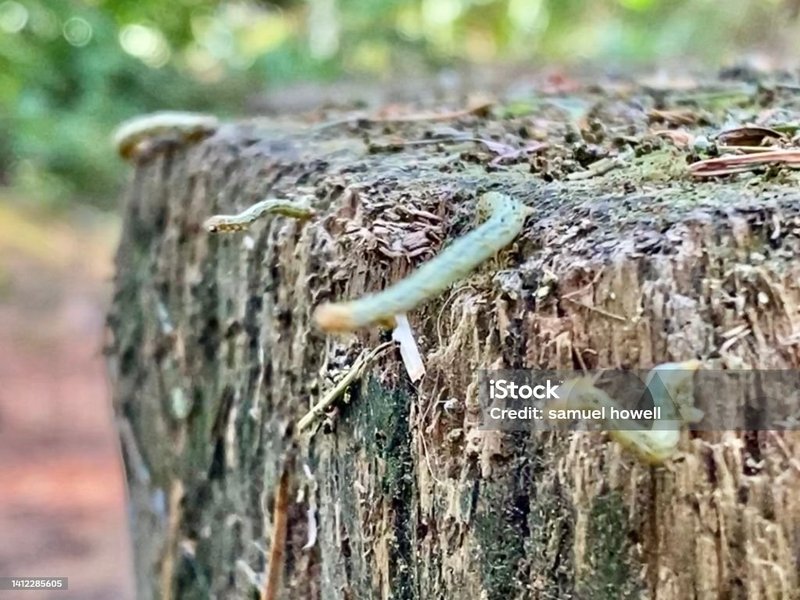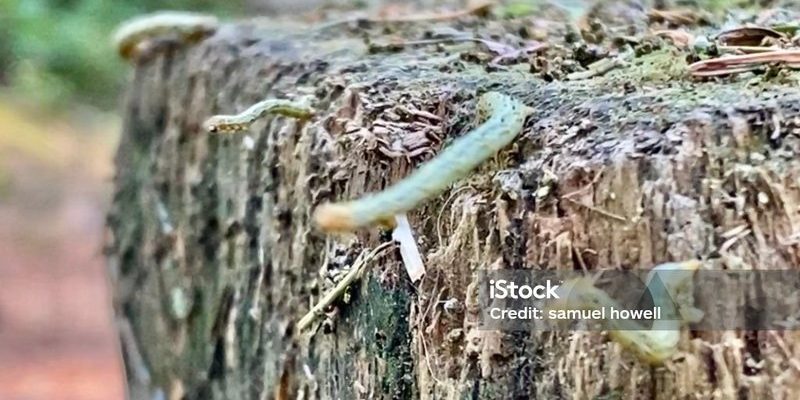
Now, monitoring these inchworms isn’t just for environmentalists. Whether you’re a gardener, a curious nature lover, or someone simply looking to connect more with your surroundings, learning how to observe inchworms can be both fun and eye-opening. Their behavior can indicate not just the health of individual trees but also the overall health of the forest ecosystem. Let’s dive into what makes these little leaf-munchers so significant.
What Are Inchworms?
Inchworms, also known as measuring worms, are the larvae of moths in the Geometridae family. They get their nickname from the unique way they move, as if they are measuring their surroundings. They’ll inch forward by contracting and stretching their bodies, which is quite a sight to see! These small, often green or brown caterpillars typically feed on the leaves of trees and shrubs, making them an integral part of the food web.
When we observe inchworms, it’s not just about enjoying their quirky movements. Their presence can tell us a lot about the conditions of the plants they inhabit. Healthy trees can support a stable population of inchworms, while a drastic change in their numbers might alert us to underlying issues. So, understanding inchworms can be the first step in monitoring tree health.
Why Monitor Inchworms?
You might be wondering why inchworms are of any real importance when it comes to tree health. Here’s the thing: these little creatures are sensitive to environmental changes. If there’s a sudden spike in pesticide use or if a tree is suffering from disease, inchworm populations can fluctuate dramatically. By monitoring them, we can identify these stress factors early on.
For example, imagine a few inchworms munching happily on leaves. Now imagine, two weeks later, you find only a handful left. This sudden drop might indicate that something is wrong—perhaps the tree is under stress from a pathogen, or maybe it’s struggling with lack of nutrients. Monitoring inchworms is like keeping a pulse on tree health; it helps us respond before a small problem becomes a larger crisis.
How to Start Monitoring Inchworms
If you’re ready to start observing these fascinating little creatures, you’re in luck! Monitoring inchworms can be quite simple and requires only a few basic steps:
- Choose Your Location: Find a tree or area known for its inchworm activity, usually during spring and summer.
- Observe Leaf Damage: Check for signs of leaf damage or defoliation; healthy trees will have leaves that look lush and full.
- Count Inchworms: Spend some time carefully inspecting the leaves and branches for inchworms. Count how many you see and note their sizes.
- Record Your Findings: Keep a simple log of your observations, noting the date, location, and what you find.
These steps will not only help you get familiar with inchworms but also build a habit of observing your environment. Remember, the more you look, the more you’ll notice!
Interpreting Inchworm Behavior
Once you start monitoring inchworms, interpreting their behavior becomes crucial. You’ll want to pay attention to a few key indicators:
– **Population Booms:** A sudden increase in inchworm numbers might indicate that conditions are perfect for tree pests. While a few inchworms are normal, an overpopulation could mean trouble for the tree’s health.
– **Behavior Changes:** If you notice that inchworms are less active, it could imply some stress on their part—perhaps a lack of food or changes in temperature.
– **Leaf Consumption:** Monitoring how much damage they cause to the leaves can also be helpful. Healthy inchworm populations shouldn’t strip trees bare, but if they do, it may signal that something’s off in the ecosystem.
By keeping a close eye on these behaviors, you can better understand the health of your trees.
Benefits of Monitoring Tree Health
Monitoring inchworms leads to broader benefits for tree health and the environment. Here are a few great reasons to dive into this practice:
1. **Early Detection of Issues:** By keeping track of inchworm populations and their health, you can catch potential problems before they escalate, saving trees from distress.
2. **Enhanced Biodiversity:** Understanding how inchworms and trees interact can help maintain a balanced ecosystem, promoting biodiversity in your garden or local area.
3. **Connection to Nature:** Engaging with inchworms provides an excellent way to deepen your connection to nature. Observing the small details fosters a greater appreciation for the environment.
In a way, monitoring inchworms allows you to become a steward of the trees, ensuring they thrive for years to come.
So, the next time you spot an inchworm inching along a branch, remember that there’s more to that little creature than meets the eye. Monitoring inchworms as bioindicators of tree health connects the dots between individual species and the wider ecological web. It’s not just about protecting a single tree; it’s about nurturing the environment that sustains us all.
By becoming aware of these tiny indicators, you play a part in something much bigger—preserving the health of our forests. Whether you’re a casual observer or an aspiring environmentalist, each inchworm you notice can shape your understanding of tree health. Dive in, monitor closely, and watch how much you can learn about the world around you!

